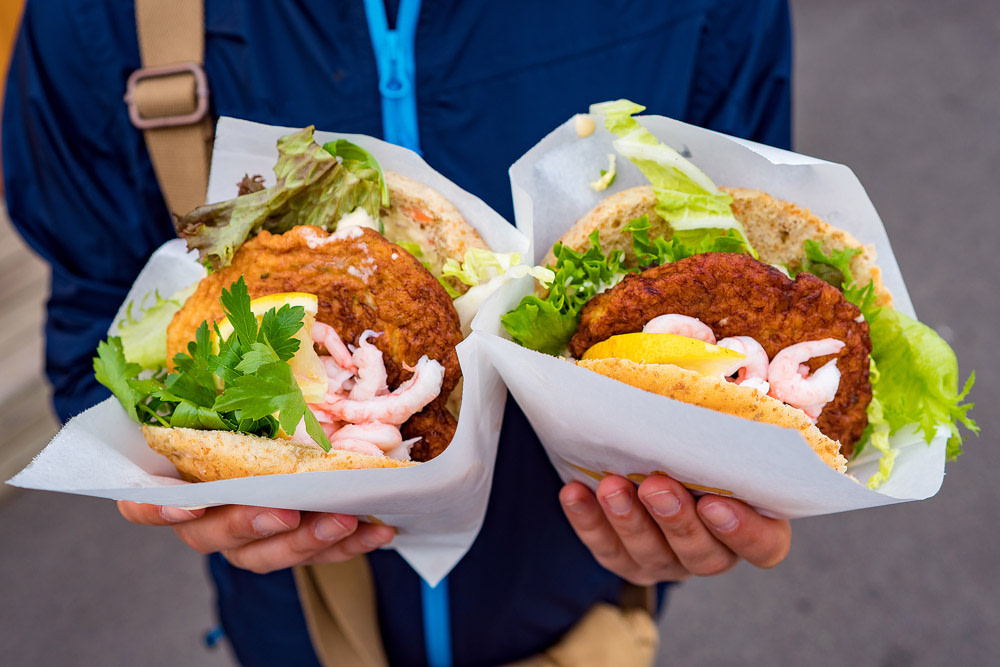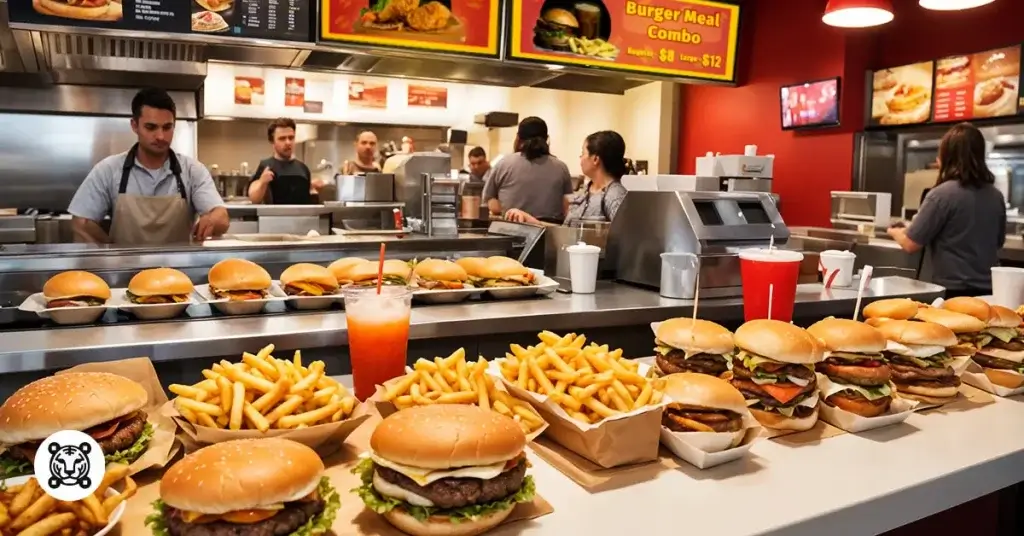Dining Delights: Discover Cutting-edge Restaurants Transforming the Food Scene
The modern eating landscape is experiencing a remarkable makeover, noted by cutting-edge dining establishments that are redefining cooking norms. From the surge of pop-up establishments embracing seasonal components to immersive experiences that involve the senses in unmatched ways, these locations are establishing new criteria for what it implies to take pleasure in a dish. Additionally, a growing focus on sustainability and neighborhood sourcing shows a dedication to both quality and neighborhood. As we check out these patterns, the concern emerges: what future developments might additionally reshape our culinary experiences?
The Surge of Pop-Up Restaurants
As the culinary landscape progresses, pop-up restaurants have become a vibrant pressure, enchanting food lovers and business owners alike. These short-lived dining establishments, frequently established up in unique areas, offer a distinct mix of creative thinking and accessibility, appealing to a varied range of consumers. The surge of pop-up dining establishments can be attributed to several factors, including the growing demand for unique eating experiences and the entrepreneurial spirit of cooks keen to examine their cooking ideas without the monetary problem of an irreversible location.Pop-up restaurants permit cooks to trying out menus, styles, and motifs, usually focusing on seasonal or locally-sourced ingredients. This adaptability not just promotes development yet additionally develops a feeling of urgency, as clients are attracted to the limited-time offerings. The ephemeral nature of pop-ups cultivates a buzz around the dining experience, urging social media sites sharing and word-of-mouth promo, which can considerably enhance exposure and bring in a dedicated following.Furthermore, pop-up dining establishments often deal with particular niche markets, ranging from vegan and gluten-free choices to ethnic foods, thereby meeting the diverse nutritional choices of modern consumers. Because of this, these establishments add to the abundant tapestry of the food scene, pushing limits and challenging traditional notions of dining.
Immersive Eating Experiences

Sustainable Practices in Food
Accepting sustainability, innovative dining establishments are redefining their cooking practices to lessen environmental influence while improving the eating experience. These establishments focus on neighborhood sourcing, commonly collaborating with neighboring farmers and producers to ensure that active ingredients are fresh and seasonal. This not just minimizes the carbon impact connected with long-distance transport yet additionally sustains local economies.In enhancement to sourcing, dining establishments are significantly embracing methods that decrease waste. Several are executing composting systems and making use of food scraps creatively, changing what would usually be disposed of right into delicious elements of new recipes. For instance, vegetable trimmings can locate new life in supplies or garnishes, while stale bread is repurposed right into croutons or bread puddings.Moreover, the fad in the direction of plant-based food selections is obtaining momentum (Restaurants). By highlighting vegetables, grains, and beans, dining establishments can considerably lower their ecological influence, as plant-based foods commonly require fewer sources and create less greenhouse gas discharges contrasted to meat manufacturing. Cutting-edge chefs are crafting recipes that not just commemorate these ingredients however also give diners with an extraordinary culinary experience.Furthermore, numerous establishments are adopting environment-friendly techniques such as utilizing biodegradable packaging for takeout and investing in energy-efficient devices. These measures mirror a commitment to sustainability at every degree of operation, permitting restaurants to appreciate their dishes with the expertise that their choices contribute to a healthier world. As the food scene proceeds to develop, the integration of lasting practices comes to be not simply a pattern, but a needed criterion for the future of dining
Tech-Enhanced Eating Adventures
Tech-enhanced dining journeys are changing the way clients experience meals, with over 70% of restaurants currently integrating digital advancements to boost solution and interaction. These innovations are not simply patterns; they are basic changes that redefine the cooking landscape. From the minute diners get in a dining establishment, innovation is flawlessly woven into the experience, improving both benefit and enjoyment.One of the most significant advancements is making use of mobile applications for appointments and food selection browsing. Restaurants can currently view detailed descriptions, nutritional information, and even the origins of components at their fingertips. This openness fosters notified options and permits guests to customize their eating experience to their preferences.Furthermore, interactive tables outfitted with touchscreens supply an appealing platform for buying and entertainment. Restaurants can tailor their meals, discover white wine pairings, and even play games while waiting on their dishes. This assimilation of modern technology not only enhances the getting procedure yet also transforms dining into a vibrant, communal activity.Moreover, some facilities are using augmented fact (AR) to create immersive eating experiences. By merely directing a smartphone at a meal, customers can visualize the ingredients and cooking approaches in an interesting manner, linking the space in between the culinary and electronic worlds.As restaurants proceed to embrace these technical technologies, the eating experience comes to be increasingly customized, reliable, and pleasurable. This makeover reflects a more comprehensive pattern towards improving consumer interaction, ensuring that each dish is not practically food, but a memorable experience in dining.
International Tastes With a Twist
The culinary landscape is progressively marked by blend cuisine developments that blend conventional tastes with unexpected elements - Restaurants. Distinct active ingredient pairings not just boost the eating experience but additionally admire social heritage, reimagining cherished dishes in amazing brand-new methods (Eddie's Rise N' Dine Williamsville IL). This imaginative technique invites special info restaurants to explore diverse worldwide influences while experiencing acquainted preferences in a fresh context
Fusion Cuisine Innovations
Imagination in the cookeries has brought about a vivid resurgence of fusion food, where chefs mix diverse worldwide tastes to create ingenious dishes that oppose standard boundaries. This culinary motion goes beyond mere mix, concentrating on the unified integration of active ingredients and techniques from different cultures.Restaurants concentrating on fusion food are redefining eating experiences by providing recipes that inform a story with taste, method, and presentation. As an example, the marital relationship of Japanese sushi with Peruvian ceviche has led to distinct rolls that commemorate both cooking heritages. In a similar way, Indian flavors have located their means right into Italian pasta dishes, supplying a fascinating twist on traditional recipes.Chefs are likewise trying out food preparation approaches, such as using standard frying pan strategies to prepare Latin American stir-fries, consequently developing an abundant tapestry of preferences and textures. Seasonal schedule of ingredients additionally enhances this creative process, permitting for fresh interpretations of time-honored meals. The allure of blend food lies in its capacity to surprise and pleasure the palate, encouraging restaurants to discover brand-new culinary landscapes while fostering a greater admiration for the diversity of worldwide gastronomy.
Unique Ingredient Pairings
Cooking innovation frequently prospers on the unexpected, and unique ingredient pairings go to the leading edge of this trend in the contemporary dining landscape. Cooks are significantly exploring with combinations that surprise and delight the palate, raising the dining experience past typical boundaries.For example, the juxtaposition of sweet and mouthwatering has actually ended up being a characteristic of contemporary food. Eddie's Rise N' Dine Williamsville IL. Think of crunchy duck offered with a cherry and balsamic glaze, where the flavor of the cherries complements the richness of the meat. Likewise, recipes including miso-infused delicious chocolate treats showcase just how umami can enhance sweet taste, producing a well balanced flavor profile that intrigues diners.Furthermore, the usage of unconventional flavors in unexpected contexts, such as saffron in a traditional risotto coupled with lemon zest, highlights exactly how cooking limits can be redefined. These innovative pairings not just develop aesthetic and textural contrasts however also welcome restaurants to discover a spectrum of worldwide flavors in a single dish.As dining establishments remain to forge ahead, the excitement of uncovering new tastes through one-of-a-kind ingredient pairings promises to be a specifying attribute of the contemporary food scene, welcoming adventurous eaters to enjoy these imaginative cooking discussions
Cultural Heritage Reimagined

The Art of Multi-Sensory Meals
In the domain of cooking development, multi-sensory dishes are revolutionizing the eating experience by intertwining taste and aroma in captivating means. The impact of visual presentation improves not simply the aesthetic appeal however additionally the understanding of taste, while carefully curated soundscapes elevate the ambiance. With each other, these elements create an all natural experience that involves all detects, changing how clients get in touch with food.
Flavor and Aroma Blend
An expanding variety of chefs are welcoming the principle of flavor and fragrance blend, acknowledging that a meal is not just a combination of active ingredients however a holistic experience that involves all the senses. This cutting-edge approach highlights the complex partnership in between taste and odor, both of which substantially affect our perception of food.Chefs are try out numerous strategies to enhance flavors while at the same time crafting aromatic profiles that elevate the eating experience. The use of aromatic natural herbs and seasonings not just includes deepness to dishes yet additionally entices the olfactory detects, developing a more immersive experience. Infusions, smoke, and crucial oils are significantly preferred, allowing chefs to manipulate aroma and boost the overall taste profile.Moreover, the tactical pairing of corresponding and different tastes can stimulate emotional responses, changing a dish right into a remarkable event. Diners are motivated to enjoy each bite, as the interaction of flavors and aromas unfolds, inviting them to explore new dimensions of preference. This thoughtful amalgamation of sensory aspects fosters an appreciation for the virtuosity of cuisine, placing flavor and fragrance blend as a crucial pattern in modern-day gastronomy.
Aesthetic Discussion Effect
Beyond flavor and fragrance, the aesthetic discussion of a dish plays a crucial function in the general dining experience. The looks of food can evoke emotions, established the tone for the dish, and improve the expectancy of sampling. Innovative restaurants are progressively identifying that a dish's appearance can influence visitors' assumptions and contentment degrees, occasionally even before the first bite is taken.Artful plating strategies, vibrant shade mixes, and imaginative garnishes add to a meal's visual appeal. Chefs are now trained not simply in cooking skills, yet likewise in the art of discussion, frequently drawing motivation from various artistic techniques. For circumstances, using negative area in plating helps to produce centerpieces, enabling the ingredients to shine.Moreover, the trend of multi-sensory dishes incorporates visual components with various other senses, such as appearance and temperature level, to create an alternative eating experience. This method motivates diners to engage even more deeply with their food, changing a straightforward dish into a memorable occasion. Fundamentally, the aesthetic discussion of food is not just an aesthetic endeavor; it is an important part of the eating experience that can boost a meal from normal to phenomenal.
Soundscapes in Eating
The experience of dining expands past the visual elements of a meal; audio additionally plays a considerable function fit exactly how food is viewed and delighted in. Ingenious dining establishments are progressively discovering the idea of soundscapes-- curated audio atmospheres created to boost the dining experience (American Restaurant). The interplay of noise and taste can greatly influence an individual's understanding of taste, appearance, and total satisfaction.Research indicates that specific audios can magnify or lessen flavors. As an example, piercing audios may enhance sweet taste, while lower regularities can increase bitterness. This phenomenon has led some chefs and restaurateurs to work together with audio designers, creating distinct acoustic backgrounds that match their cooking offerings. Best Restaurants.In these settings, restaurants might locate themselves involved in a very carefully crafted sound setting, ranging from the mild rustle of leaves to the balanced audios of a dynamic cooking area. Such multisensory dishes not just engage the taste buds yet also evoke emotional responses, enhancing the general experience. By harnessing the power of noise, these innovative eating facilities are redefining the means we experience food, urging patrons to relish each bite while fully engaging their senses
Community-Centric Culinary Campaigns
Often, cutting-edge restaurants are redefining their duties within local communities by carrying out cooking efforts that prioritize social obligation and inclusivity. These facilities are significantly interesting in techniques that not just enhance their service designs but also add to the welfare of their neighborhoods.One famous pattern is the facility of neighborhood kitchen areas that use cooking training and job positioning for underserved populaces. These cooking areas not just provide valuable abilities yet also foster a sense of belonging, encouraging individuals to develop their very own culinary paths. Additionally, lots of dining establishments are partnering with local ranches and manufacturers, emphasizing farm-to-table practices that support sustainable farming and lower carbon impacts. This not only ensures freshness and quality however additionally strengthens regional economies.Another campaign acquiring traction is the principle of communal eating experiences, where diverse groups come together to share dishes and tales. This method grows understanding and appreciation amongst different societies, breaking down obstacles and promoting inclusivity. Dining establishments are progressively taking on waste decrease strategies, such as composting and recycling food scraps, which not just addresses ecological issues yet additionally urges patrons to mirror on their usage behaviors.
Often Asked Inquiries
Exactly How Do Cutting-edge Dining Establishments Maintain Consistency in Food Top Quality?

What Are the Costs Connected With Beginning a Pop-Up Restaurant?
Beginning a pop-up restaurant involves different prices, consisting of venue rental, tools acquisitions, allows, marketing, staffing, and food products. Furthermore, entrepreneurs must allocate unanticipated expenditures to ensure smooth procedures during the venture's duration.
How Do Dining Establishments Pick Their Areas for Pop-Up Occasions?
Restaurants choose pop-up occasion places based on target demographics, foot traffic, availability, and competition. Furthermore, they think about neighborhood market patterns and neighborhood engagement opportunities to make best use of presence and boost customer experience throughout the occasion.
What Effect Do Food Trends Have on Dining Establishment Menus?
Food trends significantly affect restaurant food selections by leading component selection, affecting meal creativity, and forming customer preferences. Facilities commonly adapt to these patterns to enhance client allure, keep competition, and line up with progressing cooking assumptions.
How Can Diners Support Community-Centric Culinary Initiatives?
Diners can sustain community-centric culinary efforts by purchasing from neighborhood restaurants, getting involved in farm-to-table events, involving with food cooperatives, promoting lasting practices, and supporting for plans that strengthen regional food systems and improve community wellness.